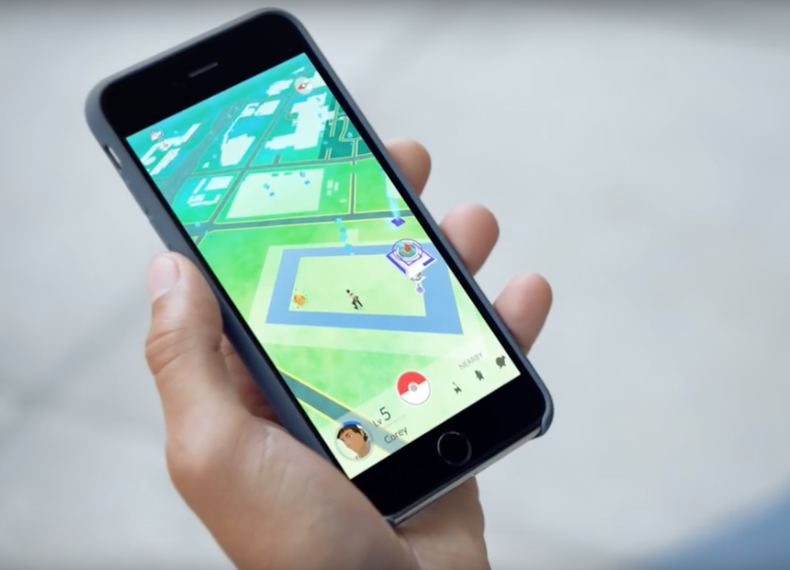 Curious about what a blockbuster game (or app) looks like from a metrics perspective? App-analytics firm App Annie dug into the numbers behind “Pokémon Go,” revealing some interesting tidbits for developers in the process. “Pokémon Go,” released by Nintendo in conjunction with Niantic Labs and The Pokémon Company, is an augmented reality (AR) game for mobile devices. After downloading the app, players must walk around the real world, trying to capture digital creatures that appear superimposed over actual environments. Amidst the various charts showing the game’s daily revenue (which stands at $10 million on iOS and Google Android combined), there’s a data-point that could come as a relief to other developers in the space: usage of “Pokémon Go” had no effect on time spent playing other games. “As [‘Pokémon Go’] gameplay relies on users being out and about, consumers seem to have incorporated the game into their daily routines and commutes,” read App Annie’s note accompanying the data. “This implies that ‘Pokémon Go’ is successfully acquiring a sizeable chunk of previously ‘non-mobile time.’” Game developers might also take note of the augmented-reality features that power “Pokémon Go,” App Annie added, especially sponsored locations and in-game purchases: “These second-order effects give developers an obvious opportunity—engage users in the real-world during the time they do not typically engage with apps and create new revenue streams at the same time.” Even if developers don’t have the time or funding to build an immersive VR experience on the scale of “Pokémon Go” (which had quite a bit of corporate funding and thought behind it), they could still leverage AR to increase the “stickiness” of their own apps. For example, they could make in-game items available at specific real-world businesses, which in turn would pay for the increased number of visitors. “The implementation of these AR modules could be basic, like a Google Maps overlay, or complex, such as something tailored to the app’s user interface,” App Annie concluded. “In other words, cost is unlikely to be a major obstacle to simple AR implementations, but returns are likely to have significant upside.” Those interested in building out their AR skill-set will need to learn a handful of technologies and software platforms, including 3D modeling, computer vision, and (especially important) mobile programming. Although these skills may take some time to develop, they’ll pay off if AR truly becomes the Next Big Thing.
Curious about what a blockbuster game (or app) looks like from a metrics perspective? App-analytics firm App Annie dug into the numbers behind “Pokémon Go,” revealing some interesting tidbits for developers in the process. “Pokémon Go,” released by Nintendo in conjunction with Niantic Labs and The Pokémon Company, is an augmented reality (AR) game for mobile devices. After downloading the app, players must walk around the real world, trying to capture digital creatures that appear superimposed over actual environments. Amidst the various charts showing the game’s daily revenue (which stands at $10 million on iOS and Google Android combined), there’s a data-point that could come as a relief to other developers in the space: usage of “Pokémon Go” had no effect on time spent playing other games. “As [‘Pokémon Go’] gameplay relies on users being out and about, consumers seem to have incorporated the game into their daily routines and commutes,” read App Annie’s note accompanying the data. “This implies that ‘Pokémon Go’ is successfully acquiring a sizeable chunk of previously ‘non-mobile time.’” Game developers might also take note of the augmented-reality features that power “Pokémon Go,” App Annie added, especially sponsored locations and in-game purchases: “These second-order effects give developers an obvious opportunity—engage users in the real-world during the time they do not typically engage with apps and create new revenue streams at the same time.” Even if developers don’t have the time or funding to build an immersive VR experience on the scale of “Pokémon Go” (which had quite a bit of corporate funding and thought behind it), they could still leverage AR to increase the “stickiness” of their own apps. For example, they could make in-game items available at specific real-world businesses, which in turn would pay for the increased number of visitors. “The implementation of these AR modules could be basic, like a Google Maps overlay, or complex, such as something tailored to the app’s user interface,” App Annie concluded. “In other words, cost is unlikely to be a major obstacle to simple AR implementations, but returns are likely to have significant upside.” Those interested in building out their AR skill-set will need to learn a handful of technologies and software platforms, including 3D modeling, computer vision, and (especially important) mobile programming. Although these skills may take some time to develop, they’ll pay off if AR truly becomes the Next Big Thing. ‘Pokemon Go’ Lessons for App Developers
 Curious about what a blockbuster game (or app) looks like from a metrics perspective? App-analytics firm App Annie dug into the numbers behind “Pokémon Go,” revealing some interesting tidbits for developers in the process. “Pokémon Go,” released by Nintendo in conjunction with Niantic Labs and The Pokémon Company, is an augmented reality (AR) game for mobile devices. After downloading the app, players must walk around the real world, trying to capture digital creatures that appear superimposed over actual environments. Amidst the various charts showing the game’s daily revenue (which stands at $10 million on iOS and Google Android combined), there’s a data-point that could come as a relief to other developers in the space: usage of “Pokémon Go” had no effect on time spent playing other games. “As [‘Pokémon Go’] gameplay relies on users being out and about, consumers seem to have incorporated the game into their daily routines and commutes,” read App Annie’s note accompanying the data. “This implies that ‘Pokémon Go’ is successfully acquiring a sizeable chunk of previously ‘non-mobile time.’” Game developers might also take note of the augmented-reality features that power “Pokémon Go,” App Annie added, especially sponsored locations and in-game purchases: “These second-order effects give developers an obvious opportunity—engage users in the real-world during the time they do not typically engage with apps and create new revenue streams at the same time.” Even if developers don’t have the time or funding to build an immersive VR experience on the scale of “Pokémon Go” (which had quite a bit of corporate funding and thought behind it), they could still leverage AR to increase the “stickiness” of their own apps. For example, they could make in-game items available at specific real-world businesses, which in turn would pay for the increased number of visitors. “The implementation of these AR modules could be basic, like a Google Maps overlay, or complex, such as something tailored to the app’s user interface,” App Annie concluded. “In other words, cost is unlikely to be a major obstacle to simple AR implementations, but returns are likely to have significant upside.” Those interested in building out their AR skill-set will need to learn a handful of technologies and software platforms, including 3D modeling, computer vision, and (especially important) mobile programming. Although these skills may take some time to develop, they’ll pay off if AR truly becomes the Next Big Thing.
Curious about what a blockbuster game (or app) looks like from a metrics perspective? App-analytics firm App Annie dug into the numbers behind “Pokémon Go,” revealing some interesting tidbits for developers in the process. “Pokémon Go,” released by Nintendo in conjunction with Niantic Labs and The Pokémon Company, is an augmented reality (AR) game for mobile devices. After downloading the app, players must walk around the real world, trying to capture digital creatures that appear superimposed over actual environments. Amidst the various charts showing the game’s daily revenue (which stands at $10 million on iOS and Google Android combined), there’s a data-point that could come as a relief to other developers in the space: usage of “Pokémon Go” had no effect on time spent playing other games. “As [‘Pokémon Go’] gameplay relies on users being out and about, consumers seem to have incorporated the game into their daily routines and commutes,” read App Annie’s note accompanying the data. “This implies that ‘Pokémon Go’ is successfully acquiring a sizeable chunk of previously ‘non-mobile time.’” Game developers might also take note of the augmented-reality features that power “Pokémon Go,” App Annie added, especially sponsored locations and in-game purchases: “These second-order effects give developers an obvious opportunity—engage users in the real-world during the time they do not typically engage with apps and create new revenue streams at the same time.” Even if developers don’t have the time or funding to build an immersive VR experience on the scale of “Pokémon Go” (which had quite a bit of corporate funding and thought behind it), they could still leverage AR to increase the “stickiness” of their own apps. For example, they could make in-game items available at specific real-world businesses, which in turn would pay for the increased number of visitors. “The implementation of these AR modules could be basic, like a Google Maps overlay, or complex, such as something tailored to the app’s user interface,” App Annie concluded. “In other words, cost is unlikely to be a major obstacle to simple AR implementations, but returns are likely to have significant upside.” Those interested in building out their AR skill-set will need to learn a handful of technologies and software platforms, including 3D modeling, computer vision, and (especially important) mobile programming. Although these skills may take some time to develop, they’ll pay off if AR truly becomes the Next Big Thing. 

